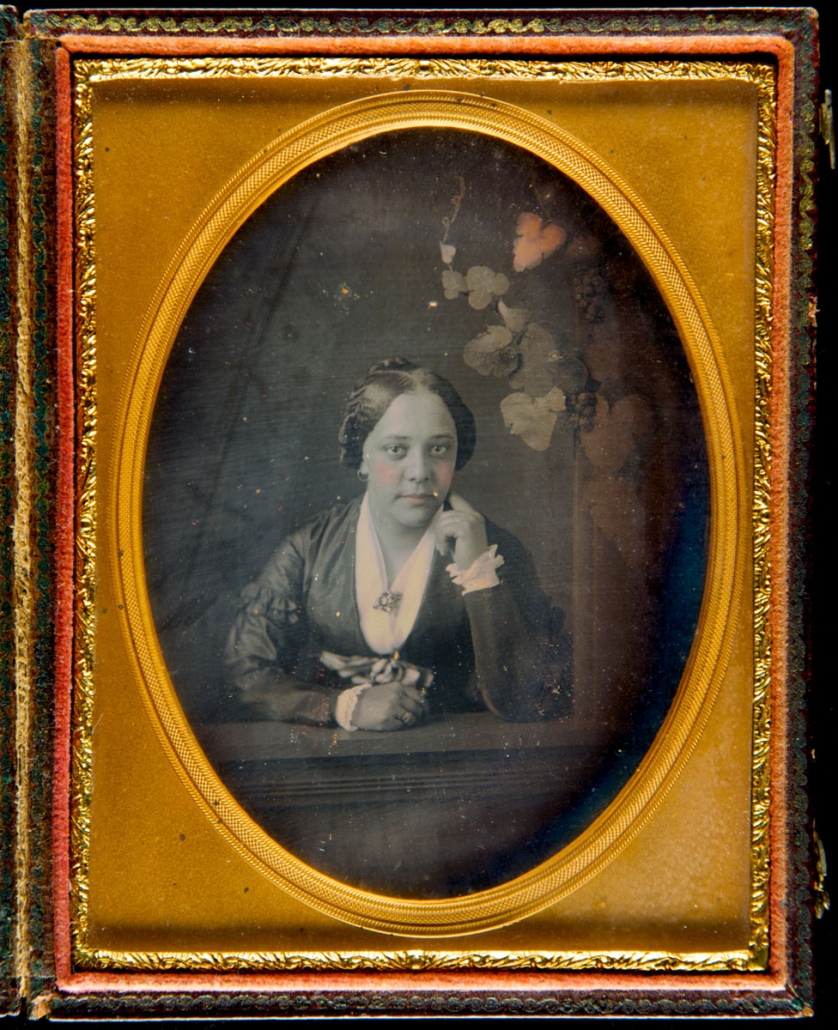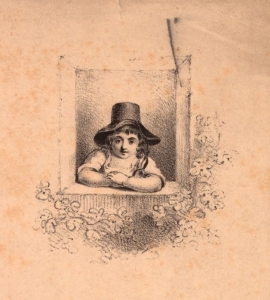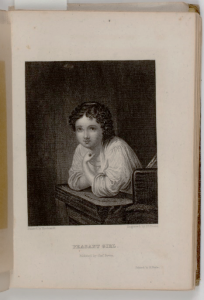[Portrait of an Unidentified African American Woman]
Lauren B. Hewes, Vice President for Collections and Andrew W. Mellon Curator of Graphic Arts, American Antiquarian Society

Examined only digital image.
Attributed to [Broadbent & Co.], Samuel Broadbent, Jr. (1810-1880), photographer.
[Portrait of an Unidentified African American woman].
Philadelphia, ca. 1850s.
Daguerreotype, ¼ plate.
Gift of Mary P. Dunn, [P.9427.13]
At just 4 ¼” x 3 ¼” and highly reflective, this daguerreotype was held in the hands of the viewer and tipped and tilted to reveal the face of the subject. Although the identity of the sitter is unknown, it is part of a collection of portrait photographs associated with the Dickersons, an African American family from Philadelphia. In the 19th century, the Dickerson family supported civic engagement and educational opportunities for the free Black community in the city and championed abolition for the enslaved. The female subject shown here could be a member of the Dickerson family or one of their many friends or associates.[1]
The daguerreotype is attributed to Samuel Broadbent, Jr. who had a studio on Chestnut Street in Philadelphia where he worked with partner Sally G. Hewes (1819-1853), one of the few female photographers in the city. The attribution is based on the set pieces used to frame the sitter – the window sill and the leafy grape vine both appear in other photographs made by Broadbent & Co. between 1851 and 1856.[2]
Most portrait photography in America at this time was entirely transactional. The sitter paid Broadbent for his services and therefore had some say in the resulting image. The use of the window and vine would have been discussed. The subject also likely selected her attire with care; her ruffled cuffs and jewelry depict her as a woman of fashion and means.[3] She touches her neck with one finger and leans forward confidently on the window sill, into the light.
This pose would have been known to Broadbent who, prior to working as a photographer, travelled in New England and the American South painting canvas portraits and ivory miniatures.[4] It also would have been familiar to the sitter and eventual viewers of the daguerreotype who would have seen similar poses used in framing prints or as illustrations in American gift books (figs. 1 & 2). Although much is unknown about this object, by utilizing the visual language of formal portraiture, the daguerreotype reads as a clear and successful likeness.
Keywords
Daguerreotype
Portrait
Illustrations
Fig. 1. Henry Inman, Scraps, detail of upper right corner, lithograph, Philadelphia, 1831. Gift of Charles Henry Taylor. American Antiquarian Society. Detail.
Fig. 2. Joseph Ives Pease after Rembrandt van Rijn, “Peasant Girl,” engraved illustration in American Keepsake: A Christmas and New Year’s Offering (New York: J.C. Riker, 1835), opp. p. 186. American Antiquarian Society.
[1] For more on the Dickerson collection see Library Company of Philadelphia: 1993 Annual Report (Philadelphia: LCP, 1993): 17-24. See also Jasmine Nicole Cobb, Picture Freedom: Remaking Black Visuality in the Early Nineteenth Century (New York: New York University Press, 2005). The Dickersons had three daughters: Mary Anne (b. 1822), Marina (b. 1829), and Amelia (b. c. 1830).
[2] Two similar daguerreotypes recently on the market include Broadbent’s matte stamp. See image of an unknown girl offered by Joan R. Brownstein, Wiscasset, Maine, Stock #2217, and an 1856 daguerreotype of Marnie (sic) Webster sold via Bid Square for Whitley’s Auctioneers, Hollywood, Florida, January 19, 2020, Lot 915.
[3] For more on the use of photography as social agency, see Maurice O. Wallace and Shawn Michelle Smith, eds. Pictures and Progress: Early Photography and African American Identity (Durham: Duke University Press, 2012); and Tanya Sheehan, Before Photography, Visualizing Black Freedom. Commonplace, Spring 2016, issue 16.2.5.
[4] American Portrait Miniatures in the Metropolitan Museum of Art (New York: Metropolitan Museum of Art, 2010): 198.


